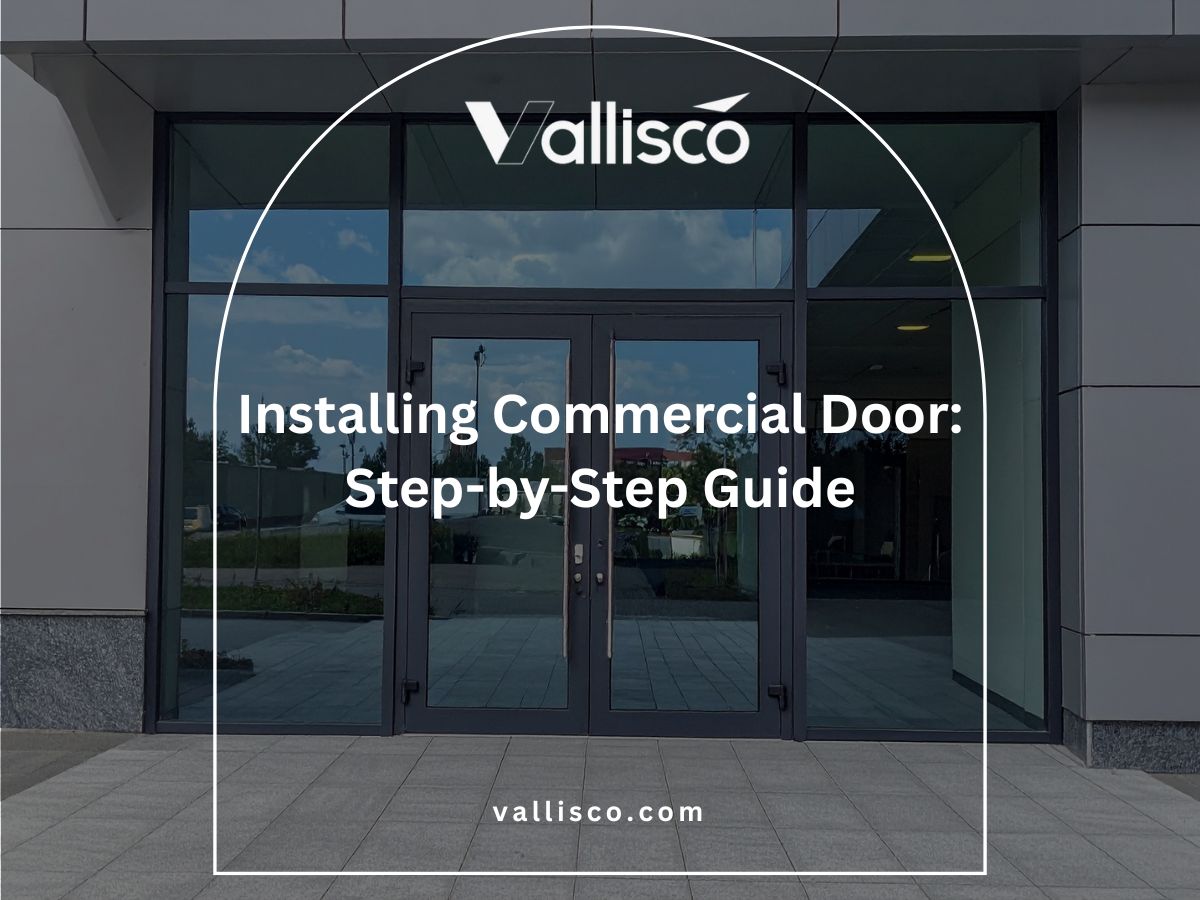Years ago, I worked with a B&B owner who wanted 2 things: better airflow and easy cleaning.
We looked at a dozen window styles. Nothing felt right until I introduced her to double hung windows. She’d never heard of them. But once she understood how the two sashes moved?
She said, “Why didn’t anyone show me this before?” That moment stuck with me.
If you’re here, you’re likely trying to figure out what makes a double hung window different. And more importantly, whether it fits your project. Maybe it’s a new build or a retrofit. Either way, this article will walk you through everything.
You’ll learn how double hung windows work, where they’re best used, what materials they come in, and how they stack up against other types.
Let’s jump in!
1. What Is a Double Hung Window?
A double hung window has two sliding sashes one at the top and one at the bottom that can move up and down inside the frame. This gives you more control over airflow and makes cleaning easier. You can open either sash, or both, depending on your needs. A single hung window, on the other hand, only allows the bottom sash to move, leaving the top fixed. This limits your options, especially in multi-story buildings.
If you’re working on a project like guest rooms, rental units, or even greenhouses, double hung windows can be a great choice. They offer better ventilation and are easier to maintain. While single hung windows might be cheaper, they often leave you wishing for more flexibility. Choosing the right window type can make a big difference in the long run.
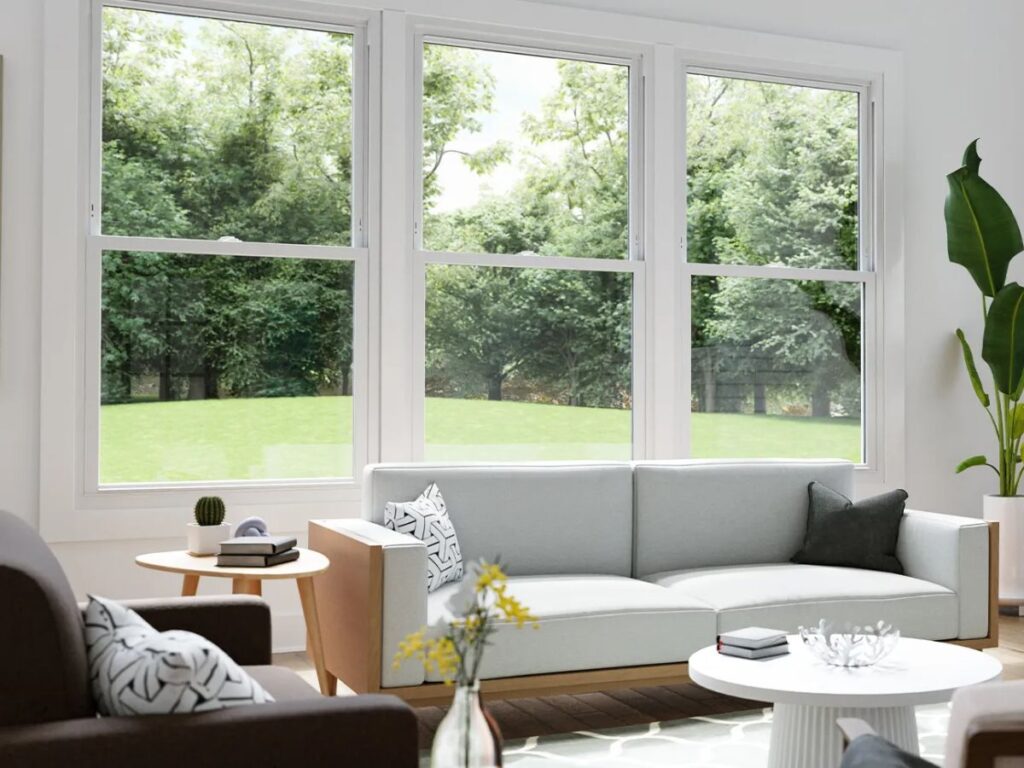
2. How Double Hung Windows Operate
Double hung windows are designed to be easy to use, offering flexibility and convenience. Let me walk you through how they work and why they might be the perfect fit for your project.
Step #1: Moving the Sashes
- Bottom Sash Operation: Slide the bottom sash up to let in fresh air from the ground level. This is ideal for cooler air entry without disturbing higher air layers in the room.
- Top Sash Operation: Slide the top sash down to release warm air that’s risen to the ceiling. This helps maintain a comfortable temperature in warmer weather.
- Dual Sash Operation: Open both sashes to create natural airflow, drawing in cool air from the bottom while letting warm air escape from the top. This provides balanced ventilation for the whole room.
Step #2: Adjusting Airflow
- Warm Weather Ventilation: Open the top sash on hot days to let rising heat escape while allowing cooler air in through other openings. This can improve comfort without relying solely on air conditioning.
- Cool Weather Fresh Air: Open the bottom sash on cooler days to bring in fresh air while retaining warmth in the upper part of the room. This helps avoid drafts while still improving air quality.
- Balanced Airflow: Use both sashes together to create an even air exchange from top to bottom. This is effective for spaces needing constant, gentle ventilation.
Step #3: Cleaning With the Tilt-In Feature
- Tilt Function for Cleaning: Tilt both sashes inward to clean the outside glass from inside the building. This is especially useful for multi-story properties where exterior access is difficult.
- No Ladder Required: Clean the windows safely and quickly without climbing outside or using special equipment. This feature saves time and effort, especially for frequent cleaning needs.
I’ve seen this feature make a big difference for property owners. One B&B owner I worked with used to climb a ladder to clean second-floor windows, but after switching to double hung models with the tilt-in option, she could do it in half the time without leaving the room.
3. Key Features
Once you understand how a double hung window moves, you may be wondering what makes it worth choosing over other window styles. Here are some key features that make double hung windows a great option for comfort, safety, and daily use.
Ventilation Versatility
With double hung windows, you can open the top, bottom, or both sashes. This allows you to let cool air in through the bottom and let warm air out through the top at the same time. It’s especially useful in bedrooms or hotel rooms, where good airflow can make a big difference in comfort. I once stayed in a rental where the top sash wouldn’t open, and the room felt stuffy all night despite the A/C.
Ease of Cleaning
Cleaning windows on upper floors can be a hassle, but double hung windows with tilt-in sashes make it easy. You can clean both the inside and outside surfaces without stepping outside or using a ladder. A villa client told me she used to hire cleaners just for the windows. Now, her staff handles it in-house with half the effort.
Energy Efficiency Options
Many double hung windows come with double or triple-pane glass, Low-E coatings, and weatherstripping. These features help to keep the heat inside during colder months and block it out during warmer months. Not only does this increase comfort, but it can also help reduce energy bills over time.
Safety and Security
Double hung windows can be secured with proper locks, and the ability to open the top sash while keeping the bottom closed makes them safer, especially in spaces with children or pets. If you manage a guesthouse or family rental, this added flexibility can make a big difference in peace of mind.
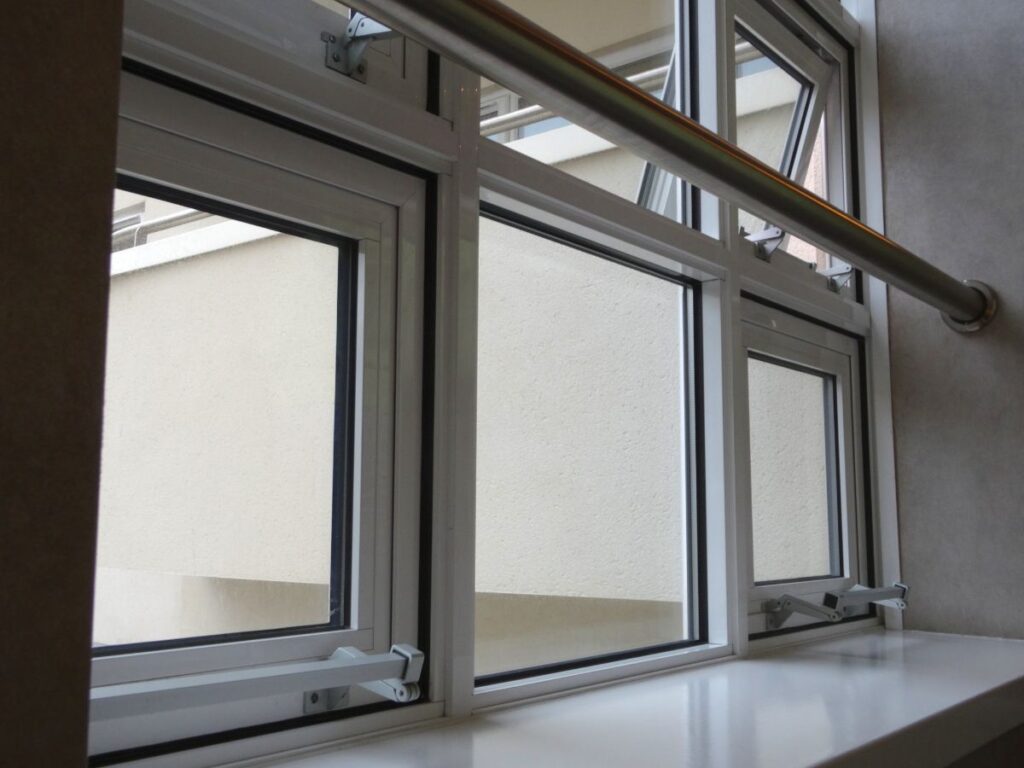
4. Advantages and Disadvantages of Double Hung Windows
Every window style comes with trade-offs, and double hung windows are no exception. While they offer a lot of benefits, they also have a few downsides that should be considered before making a decision. Based on real-world experience and building projects, here’s a breakdown of the pros and cons of double hung windows.
Advantages
- Classic Appearance: Double hung windows fit well with traditional homes and period-style buildings. Their timeless design complements various architectural styles, making them a popular choice.
- Flexible Airflow: The ability to open both the top and bottom sashes allows for better ventilation. This flexibility helps create natural airflow, especially in rooms that need consistent fresh air.
- Easy Cleaning: Tilt-in sashes make cleaning much easier, especially for second floors or hard-to-reach areas. You can clean both the inside and outside surfaces without needing a ladder.
- Wide Availability: Double hung windows are easy to find in a variety of sizes, finishes, and price ranges. Whether you’re on a tight budget or looking for something premium, there’s an option for every project.
One client at a coastal inn said guests often complimented the windows. “They’re the kind people notice, but in a good way,” she told me.
Disadvantages
- Lower Seal Tightness: Compared to casement windows, double hung windows may not seal as tightly when closed. If not installed properly, this can lead to air leakage and reduced insulation.
- Air Leakage Risk: Older or poorly maintained double hung windows are more prone to air leakage. This can negatively affect energy efficiency, especially in extreme weather conditions.
- Can Cost More: Double hung windows are typically pricier than single hung options. Though more expensive initially, they may offer better long-term benefits like energy efficiency and easier maintenance.
I’ve seen some projects skip double hung windows to save money, only to pay more in energy bills or repairs later. Sometimes the cheaper option isn’t always the better choice.
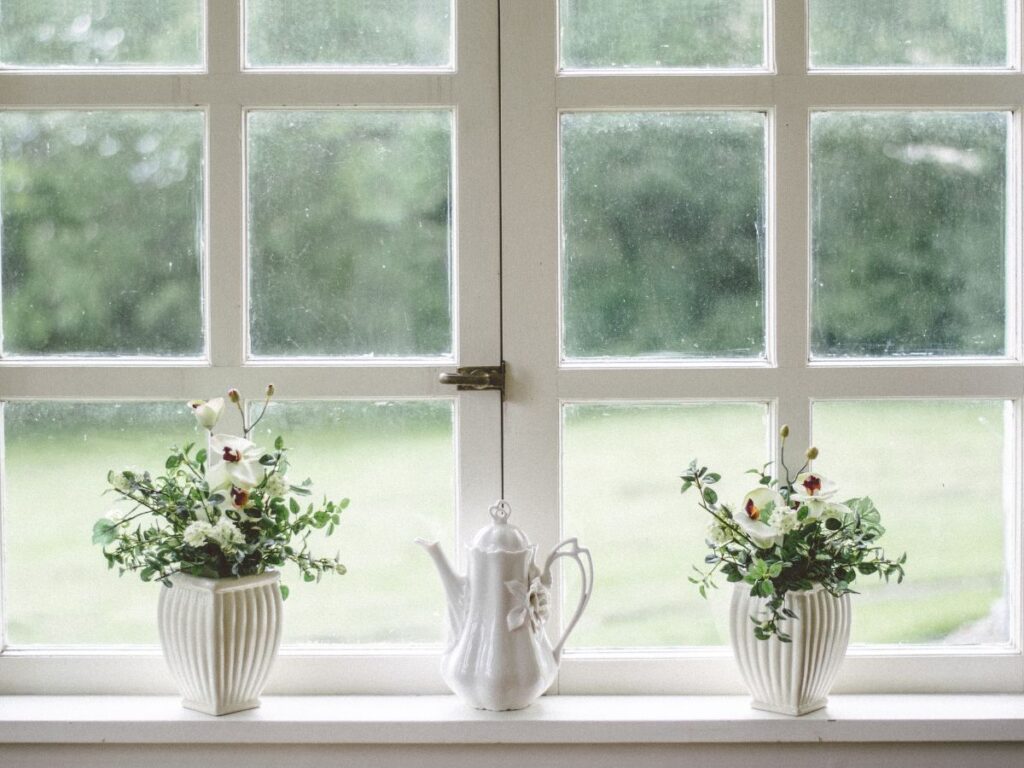
5. Common Materials and Frame Options
After considering the pros and cons of double hung windows, the next question is often about the materials used. The frame material impacts not only the look of the window but also its durability, insulation, and maintenance requirements. Below are the most common materials used for double hung windows.
Wood
Wood frames offer a classic, natural appearance and provide excellent insulation, making them a popular choice for traditional or historic buildings. However, wood requires regular maintenance, including painting, sealing, and protection from moisture. Over time, this can be a significant commitment in terms of upkeep.
Vinyl
Vinyl frames are low-maintenance, affordable, and resistant to peeling, fading, and moisture. They offer decent insulation, making them a practical option for many homes and buildings. Vinyl is a good choice for those seeking a cost-effective and hassle-free window material.
Aluminum
Aluminum frames are slim and strong, making them suitable for modern and commercial buildings. While they are durable, they don’t provide the same level of insulation as wood or vinyl, unless a thermal break is added. Aluminum is best for climates where insulation is less of a concern.
Fiberglass
Fiberglass frames are known for their durability and low maintenance. They expand and contract less than other materials, helping to maintain tight seals over time. Fiberglass is a great option for those looking for a long-lasting material with minimal upkeep.
Choosing the right material depends on the style of your building, your climate, and the amount of maintenance you are prepared to handle. If you’re comparing material types for your next project, Vallisco offers a wide range of frame options to match different styles and budgets.
6. Design Styles and Applications
Double hung windows aren’t just about airflow and cleaning; they also influence how your space feels and functions. Whether you’re working on a home, a B&B, or a hotel, understanding where these windows fit best can help you make the right choice for your project.
Where Double Hung Windows Work Best
Double hung windows are commonly used in the following spaces:
- Bedrooms: They provide easy control over ventilation, especially at night. This allows you to adjust airflow for a more comfortable sleep environment.
- Living Rooms: Their balanced design suits a wide range of layouts. They can add a timeless touch to modern and traditional living spaces.
- Multi-Story Homes: Tilt-in sashes make cleaning upper floors much easier. You can clean both the inside and outside without a ladder, saving time and effort.
Compatible Architectural Styles
Double hung windows complement many traditional architectural styles, including:
- Colonial: Clean lines and symmetry work well with double hung windows. They enhance the classic, elegant look of Colonial homes.
- Cape Cod: Modest proportions and charm make double hung windows a perfect match. They help maintain the simple yet appealing design typical of Cape Cod homes.
- Craftsman: Sturdy frames and simple grilles align with the Craftsman style. These windows provide a strong, functional look without overwhelming the design.
- Other Classic Builds: Double hung windows also suit cottages and townhomes. Their versatility makes them a great fit for a wide range of traditional home styles.
Customization Options
You can adjust the look and functionality of double hung windows with these options:
- Grilles: Add grilles for a more detailed or divided light appearance. They can give the window a charming, classic look or a more contemporary feel.
- Glass Types: Choose from clear, frosted, or tinted glass for added privacy. Tinted glass is particularly useful in spaces where you want to control light or reduce glare.
- Hardware Finishes: Customize the hardware with finishes like bronze, nickel, or matte black. These finishes can match the style of your home and add a personal touch to the windows.
Now that you know where and how double hung windows fit, let’s move on to installation and maintenance.
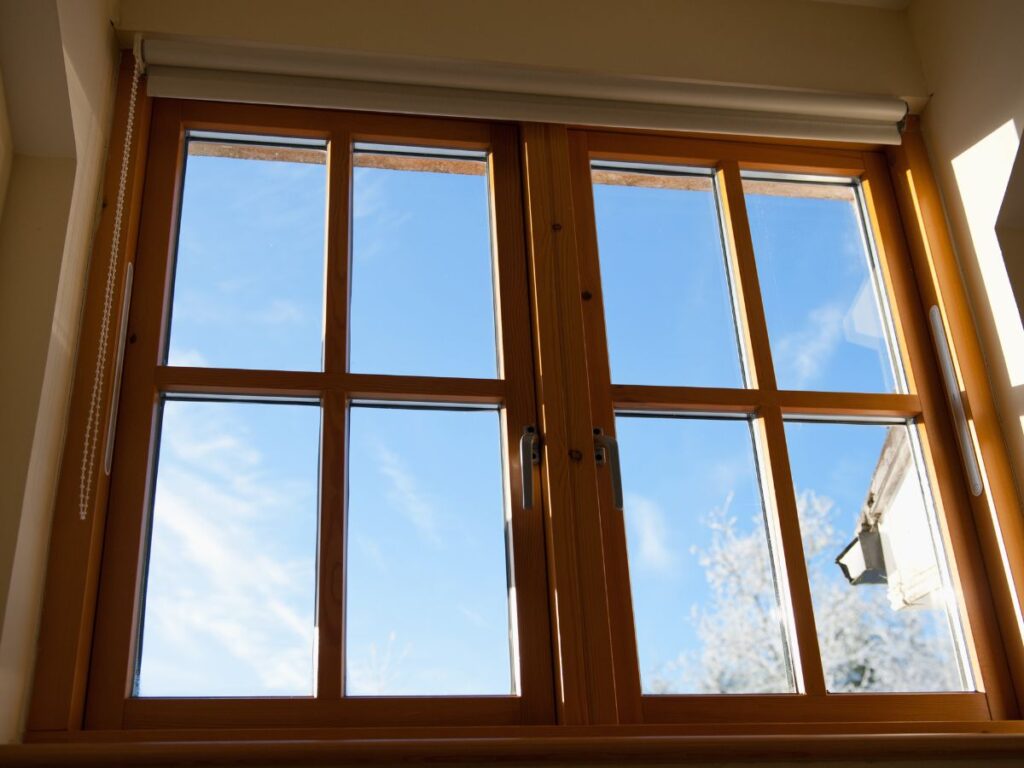
7. Installation and Maintenance Tips
You’ve explored how double hung windows work and where they fit best, but what about getting them installed and keeping them in good shape? This aspect is often overlooked, but it’s essential for ensuring your windows perform well over time. A window might look great initially but can underperform if not installed properly or maintained regularly.
What to Expect During Installation
Double hung windows can be installed in two main ways:
- Retrofit: This method is used when replacing existing windows. The new frame fits inside the old one, making it a faster and less invasive option.
- New Construction: Installed from scratch, typically during a major remodel or new build. This option offers more control over flashing, waterproofing, and insulation.
While some clients ask if they can handle the installation themselves, it’s usually best left to professionals. If you’ve done window installations before, it might be possible, but most property owners find it quicker and more reliable to hire experts. I remember one hotel team that tried a DIY installation for a few rooms and had to redo the work when drafts appeared weeks later.
Basic Maintenance Guidelines
Proper maintenance of double hung windows doesn’t require much effort, but it should be done regularly to keep them functioning smoothly. Here’s a simple checklist to follow:
- Clean the Glass and Tracks: Use soft cloth and mild soap. Avoid harsh chemicals, as they can damage the window frame.
- Check the Weatherstripping: Inspect for any gaps or wear that could affect insulation. Replace it if necessary to keep drafts out.
- Lubricate Moving Parts: Apply a small amount of silicone spray to the tracks to ensure smooth movement of the sashes.
- Test the Locks: Ensure both sashes stay secure when closed. This helps maintain security and efficiency.
With a little care, your double hung windows will perform well for years. I’ve seen windows that are 10 years old still working like new, while five-year-old windows struggled to open because the tracks were never cleaned. Your maintenance habits will play just as big of a role as your choice of window in ensuring long-term performance.
8. Cost Breakdown
By this point, you might be asking yourself, how much do double hung windows actually cost? The honest answer is, it depends. The price can vary based on materials, glass type, and how complex the installation is. But I can give you a general idea of what to expect.
Average Price Range Per Window
Here’s what you might see on the market:
- Vinyl Frames: These are generally the most budget-friendly option. Vinyl frames offer a lower cost and are a practical choice for many homeowners.
- Wood Frames: Wood tends to be more expensive, but it provides a high-end look and excellent insulation. It’s often used in traditional or historic buildings.
- Fiberglass or Aluminum: These frames fall in the middle to higher price range, depending on the finish and performance. They are more durable but come at a higher upfront cost.
Add-ons like Low-E glass, decorative grilles, or triple panes will raise the total price. However, these upgrades can offer long-term savings in comfort and energy efficiency.
Installation Costs
Installation pricing depends on several factors:
- Retrofit vs. New Construction: New installs usually cost more because they require more time and effort to complete. Retrofit jobs, on the other hand, are often quicker and less expensive.
- Location and Labor: Rates for installation can vary widely by region. Areas with a higher cost of living may have higher labor costs.
- Access and Prep Work: If the windows are on higher floors or in difficult-to-reach places, extra tools or scaffolding may be needed, which can increase the cost.
If you’re updating an entire building or multiple rooms, some suppliers may offer volume discounts. It never hurts to ask for a quote or inquire about potential savings.
Long-Term Value and Energy Savings
This part often gets missed. But energy-efficient windows can help reduce heating and cooling bills over time.
One greenhouse client told me their energy use dropped noticeably after upgrading to double hung windows with thermal glass. It wasn’t immediate but over 12 months, the numbers spoke for themselves.
So when you’re pricing out your project, don’t just look at the upfront cost. Think about how the windows will perform over the next 5, 10, or even 20 years.
9. Double Hung Windows vs. Single vs Other Window Types
You’ve seen what double hung windows can do. But how do they measure up next to other common window types? This table breaks it down for you:
| Feature | Double Hung | Single Hung | Casement | Sliding |
| Sash Movement | Top and bottom both slide vertically | Only bottom sash moves | Opens outward on a hinge | One panel slides horizontally |
| Ventilation Control | Excellent: top, bottom, or both open | Limited: bottom only | Good: full panel opens outward | Moderate: usually one side opens |
| Cleaning Access | Easy with tilt-in sashes | Harder on upper floors | Outside access needed for cleaning | Easy on ground floor, harder for upper levels |
| Energy Efficiency | Good with added glass and seals | Similar, but less flexible for airflow | Very good: tight seal when closed | Moderate: may allow more air leakage |
| Ideal For | Multi-story homes, hotels, B&Bs, guest rooms | Budget builds, ground floors | High-performance homes, where outdoor clearance is available | Wide window openings, modern layouts |
| Space Consideration | No clearance needed outside | No clearance needed outside | Needs room outside to swing open | Great for rooms with wide but short walls |
| Style Compatibility | Traditional, colonial, craftsman | Similar to double hung | Works well in modern and energy-conscious builds | Often used in modern or contemporary homes |
There’s no one-size-fits-all.So what makes the biggest difference? Knowing what you need your windows to do, before you buy them. Let’s wrap up with a few key tips to help you choose wisely.
10. Double Hung Window Buying Tips
Before you make a purchase, a few smart questions can save you time and stress. You don’t have to know everything about windows, but asking the right questions can help reveal a lot about quality, support, and long-term value. If you’re ordering multiple units or for an entire building, be sure to ask about batch pricing and lead times.
- Ask the Right Questions: Before making a purchase, ask smart questions to save time and stress. This can help you uncover important details about the quality and long-term value of the windows.
- Batch Pricing and Lead Times: If ordering multiple units or for a full building, inquire about batch pricing and lead times. Waiting until the last minute can lead to delays, as I learned from a hotel client who faced a three-week delay.
- Performance Ratings: Check the U-factor and solar heat gain coefficient (SHGC) to evaluate energy efficiency. These ratings will tell you how well the windows insulate and manage solar heat.
- Build Quality: Ask to see samples or visit recent installations to assess the durability of the windows. This will give you a better idea of how well the windows hold up in real-world conditions.
- Reviews from Similar Projects: Talk to other builders or property owners who have used the windows in similar projects. They can offer valuable insights on how the windows perform over time.
- ENERGY STAR® Certification: ENERGY STAR® is a government-backed program that rates energy-efficient products. Windows with this certification are often eligible for rebates and help reduce long-term energy costs.
- Lower Heating and Cooling Costs: ENERGY STAR® certified windows are designed to improve insulation, lowering heating and cooling costs over time. This can provide significant savings on energy bills in the long run.
- Consider Usage and Maintenance: Before you place your order, think about where the windows will be installed, who will use them, and how much maintenance you’re prepared to handle. The right windows should match your needs and minimize upkeep.
- Double Hung Windows as Smart Investment: Double hung windows may not always be the cheapest option upfront, but they often provide long-term benefits. Vallisco offers a wide range of options that combine quality, energy efficiency, and affordability for your project.
Conclusion
It’s easy to overlook windows but as you’ve seen, that one decision affects comfort, safety, and even energy bills. Now you know what a double hung window offers.
You know how it works, where it fits, and why so many building owners choose it. And the best part? You don’t have to figure it out alone.
I’ve helped clients across Europe and Southeast Asia choose better windows for real-world needs. And I’d love to help you too.
So, what kind of building are you planning?
Let’s make your next project easier. Contact Vallisco today!
Check Out These Additional Resources
Need more ideas? Browse through our extended range of products and discover something new:
Still haven’t found what you’re looking for? Don’t hesitate to contact us. We’re available around the clock to assist you.




